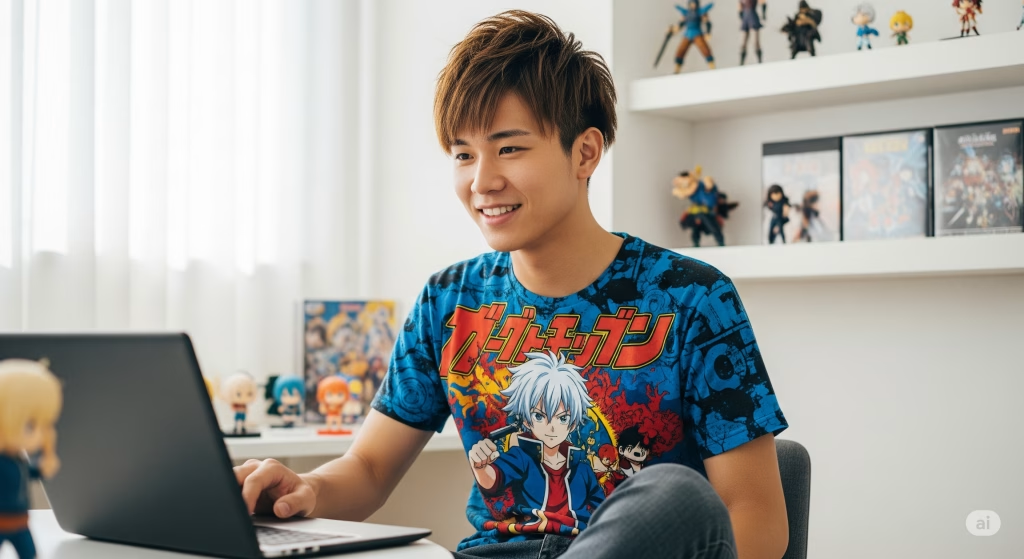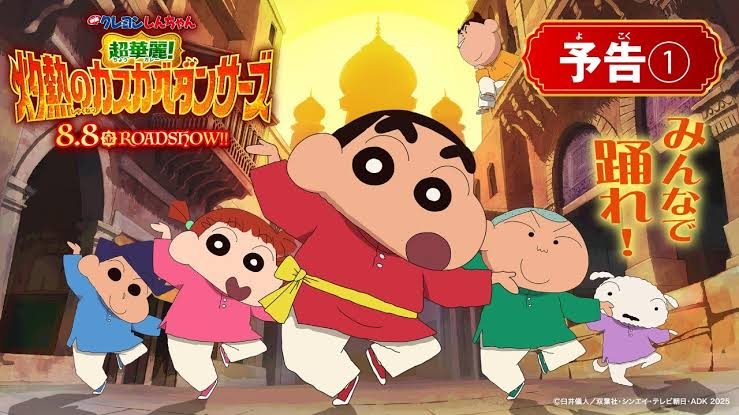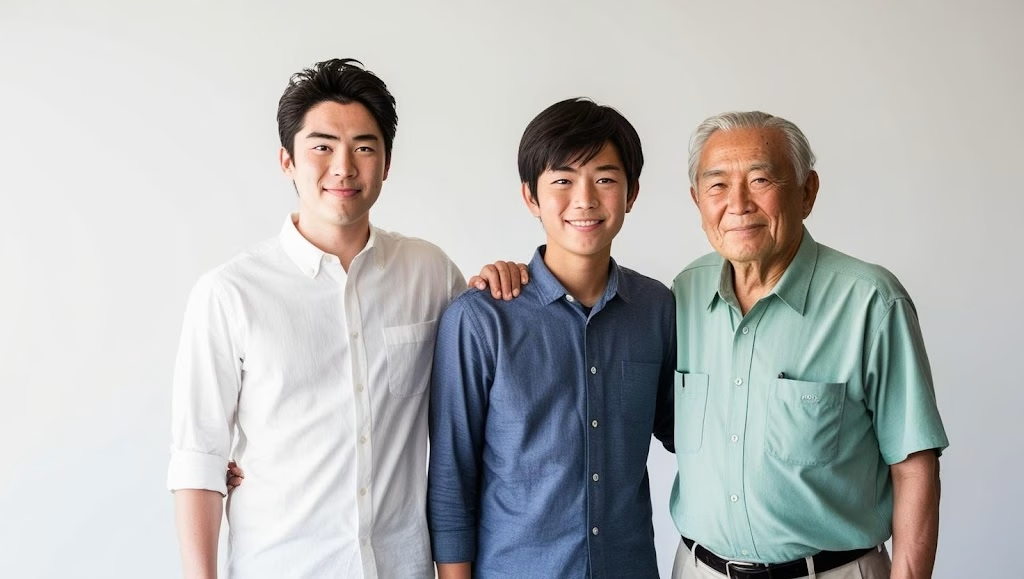Japan has long been known as a hub of innovation and rich pop culture. From majestic ancient temples to futuristic skyscrapers, the country has always been a bridge between tradition and modernity. However, there is one area where modernity, specifically in the form of the internet and digital technology, has fundamentally changed the landscape: the world of otaku hobbies and communities.
The term “otaku” may have originally had a negative connotation, referring to individuals who were obsessed with a particular hobby to the point of isolating themselves from social life. However, over time, this meaning has evolved. Today, being an otaku is often defined as someone with a deep and passionate interest in a particular subject, whether it be anime, manga, video games, model kits, or even trains. With the advent of the internet and the digital revolution, the way these otaku pursue their passions, interact, and even create content has changed drastically, giving birth to a new generation of otaku who are more connected and influential.
Accessibility of Information and Content: The World at Your Fingertips

In the past, to indulge in a favorite hobby like anime or manga, fans outside of Japan had to wait months for international releases, or rely on pirated comics and low-quality VHS tapes. Now, things have changed completely.
Legal anime and manga streaming services such as Crunchyroll, Netflix, Bilibili, or even Shueisha’s Manga Plus, have opened the door for fans around the world to access the latest content simultaneously with its release in Japan. This not only reduces piracy but also accelerates the spread of trends and popularity of certain characters or series globally. Fans no longer have to wait; they can immediately join the conversation and enjoy the latest episode just hours after it airs in Japan. This is typical of the new generation of otaku who demand instant access.
The same goes for video games. With digital distribution through platforms like Steam, the PlayStation Store, or the Nintendo eShop, Japanese games that might have been hard to find overseas can now be purchased and played instantly. Even indie games from small Japanese developers now have the opportunity to reach a global audience without having to go through a major publisher.
Information about the hobby has also become incredibly accessible. Want to know the details about the latest figure? Just visit the manufacturer’s website or a collector’s forum. Looking for a tutorial on building a complicated Gunpla? YouTube is filled with step-by-step videos from experienced builders. The internet has become a giant encyclopedia that allows otaku to explore their interests down to the smallest detail, learn from fellow enthusiasts, and stay up-to-date on the latest developments. This easy access to information defines the experience of a new generation of otaku.
Building Community Bridges: From Forums to Social Media
Before the internet, otaku communities were often confined to school clubs, local hobby shops, or large-scale conventions held only a few times a year. Exchanges of ideas and friendships were formed physically, and their reach was limited.
Today, the internet has broken down geographical boundaries, allowing a new generation of otaku from all over the world to connect and interact. Dedicated online forums, such as 2channel (now 5channel) in Japan or Reddit and 4chan globally, have long been hotbeds of discussion, fan theories, and information sharing. Fans can discuss the latest episode, dissect the plot, or even have heated debates about their favorite characters.
But it’s social media that has truly revolutionized these interactions. Platforms like X (formerly Twitter) have become real-time hubs for discussions about current anime, with hashtags trending whenever a new episode is released. Instagram and TikTok have become visual galleries for collectors to show off their figures and merchandise, or for cosplayers to show off their costume creations. Discord, with its voice and text channels, has become a place for small and large groups to gather, play games together, watch anime together (watch parties), or just hang out. This is how a new generation of otaku are connecting.
This has created a more inclusive and dynamic community. People with similar interests can easily find each other, share experiences, provide support, and even form close friendships even though they are thousands of miles apart. For many otaku, especially those who feel isolated in their physical environment, these online communities have become a safe space where they can be themselves and celebrate their passions without judgment. This phenomenon is especially strong among the new generation of otaku.
VTuber Phenomenon: Digital Idols and New Interactions
One of the most interesting innovations to emerge from the intersection of hobby and technology in Japan is the phenomenon of Virtual Youtubers (VTubers). Instead of using real faces, VTubers are digital characters (avatars) brought to life by a human performer behind them, using motion capture technology.
The phenomenon began with pioneers like Kizuna AI and has grown into a massive industry with agencies like Hololive Production and Nijisanji managing hundreds of VTubers. These VTubers do all the things that traditional YouTubers do: playing games, singing, chatting with fans, and even holding virtual concerts.
The appeal of VTubers lies in the combination of the compelling identity of anime characters with authentic real-time interactions. Fans don’t just “watch” the characters; they can interact directly through chat, send super chats (paid donations), and feel personally connected to their digital idols. This creates a new generation of idols that offer a different experience from live-action idols or static fictional characters.
For the new generation of otaku, VTubers are a natural extension of their love of fictional characters. They get to see their favorite characters “come to life” and interact with the real world, even if it’s through a screen. It also opens up new opportunities for performers who may not be comfortable performing in front of the camera, but have a talent for entertaining and engaging. This is one form of entertainment that the new generation of otaku are loving.
Crowdfunding and Direct Support: Empowering Creators and Fans
The internet has also changed the way fans support their favorite creators and projects. Crowdfunding platforms like Kickstarter, Campfire (in Japan), or even Patreon, have become powerful tools for artists, indie game developers, or small anime production teams to get funding directly from their communities.
In the past, a creator had to rely on a big publisher or a studio with a lot of capital. Now, with the crowdfunding model, a manga artist can get funding to print their dōjinshi (independent work), a small team can develop their dream video game, or even a restoration project of an old anime can be realized thanks to the collective contributions of thousands of fans. This is a real manifestation of the power of the new generation of otaku.
This creates a more transparent and direct relationship between creators and their audiences. Fans feel like they are part of the creative process, and they see how their support directly contributes to the creation of the content they love. In return, creators often offer exclusive rewards like limited edition merchandise, early access to content, or even the chance to have their name appear in the project credits.
This pattern doesn’t just apply to big projects. Fan artists can now sell their prints or merchandise directly to fans through e-commerce platforms like Booth.pm (a popular site in Japan for dōjin and independent merchandise), or receive monthly support through Patreon. This allows independent creators to make a living from their passion, and enriches the otaku content ecosystem as a whole. This direct support is a hallmark of a new generation of proactive otaku.
Social Media as a Stage for Promotion and Global Influence
In the digital era, social media is not only a place to interact, but also an unlimited promotional stage. Japanese anime companies, game studios, and figure manufacturers are now actively using platforms such as X, Instagram, and YouTube to announce new products, show trailers, or interact directly with fans.
The impact of these promotions is huge. A tweet from an anime studio’s official account about a new episode’s release date can reach millions of fans in seconds. An influencer’s unboxing video of a figure on YouTube can trigger a wave of orders. This allows word to spread faster and reach a much wider global audience than traditional promotional methods.
Not only companies, but also individuals such as professional cosplayers, experienced figure collectors, or game reviewers have become influencers in the new otaku scene. They build large followings with high-quality content, and their opinions can influence purchasing decisions or even shape trends within the community. For example, a famous cosplayer wearing a new costume can make the character go viral, or a game reviewer's honest review can be the difference between a title's success or failure.
This is one way that the new generation of otaku are influencing pop culture. It shows how social media has changed the hierarchy of information and promotion, giving more power to individual voices and communities, alongside traditional channels of promotion.
Challenges of the Digital Age: New Issues in the Otaku World
Although the internet brings many benefits, there are also challenges that the new generation of otaku need to face.
Digital piracy remains a problem, although legal streaming services have mitigated some of its impact. Content uploaded illegally on unlicensed platforms still hurts creators and the industry.
“Toxic fandoms” are also an issue. The anonymity offered by the internet can sometimes lead to negative behavior, heated arguments that escalate into bullying, or even “cancel culture” where a creator or fan is roundly attacked for views or mistakes that are considered taboo by some groups. Keeping online spaces positive and respectful is an ongoing challenge for the new generation of otaku.
In addition, there is the issue of balance between online and offline hobbies. Spending too much time in the virtual world can reduce social interactions in the real world, or even cause internet/game addiction. It is important for the new generation of otaku to maintain a balanced lifestyle.
Finally, the issue of privacy and data security is also relevant, especially with the amount of personal data being shared online, whether it’s payment information for merchandise or photos of yourself cosplaying.
The Future of Otaku Hobbies: VR, AR, and AI
Looking ahead, technology continues to evolve and will continue to shape the otaku hobby experience.
Virtual Reality (VR) and Augmented Reality (AR) have the potential to revolutionize the way we experience entertainment. Imagine being able to step into the world of your favorite anime through VR, or seeing your favorite manga characters appear in your room through AR. Some VR games are already starting to offer such immersive experiences, and VTuber concerts in VR are already a reality. This is the future that the new generation of otaku are looking forward to.
Artificial Intelligence (AI) will also play a bigger role. AI can help in the content creation process, such as creating soundtracks for fan videos, generating artwork (although this also raises ethical debates about ownership), or even developing games. AI can also help recommend new content that suits otaku’s unique interests.
Ultimately, the new generation of otaku is living proof of how technology can be a catalyst for passion, creativity, and connection. The internet has opened up a wider world for those passionate about their hobby, allowing them to find community, support creators, and enjoy content in ways never before imagined. Despite the challenges, the potential for innovation and growth in the tech-driven otaku hobby seems limitless, continuing to reshape the landscape of Japanese pop culture and its impact around the world.

















